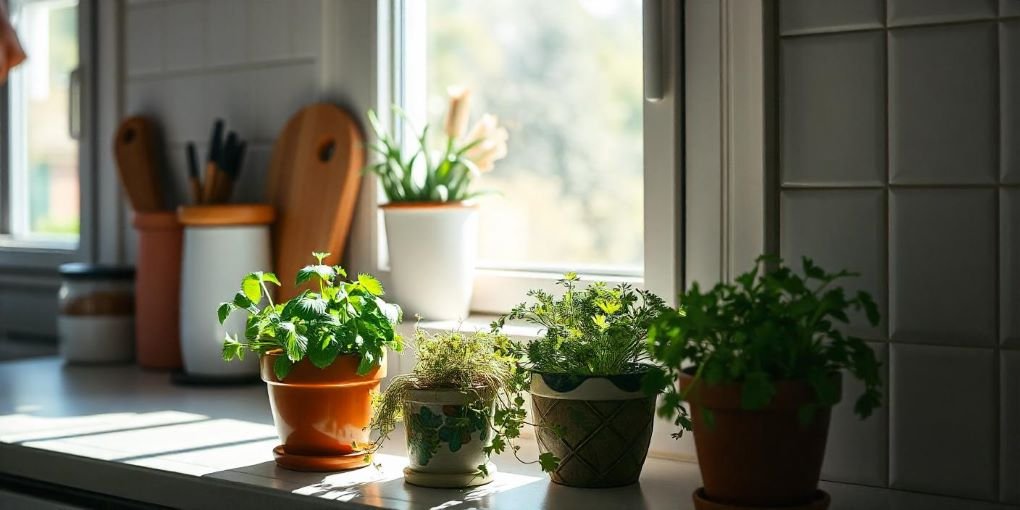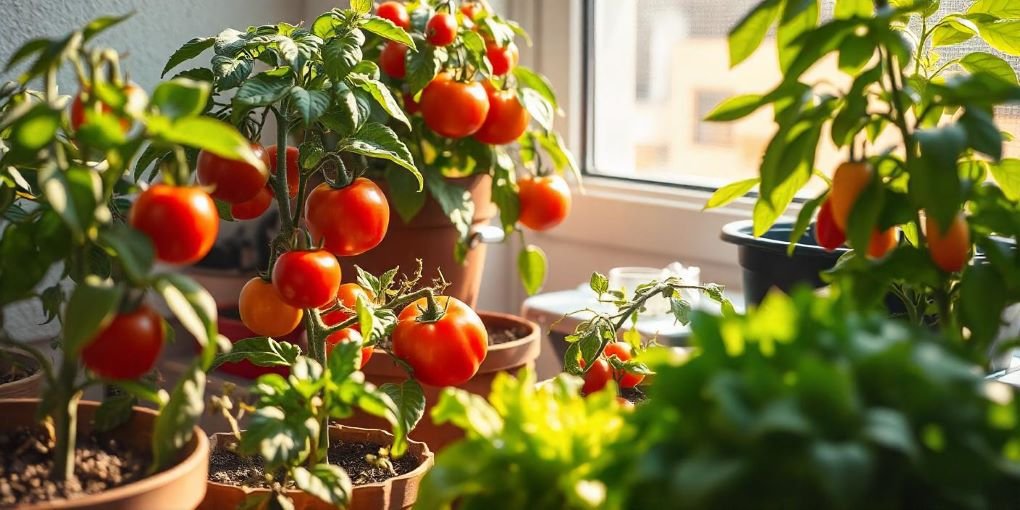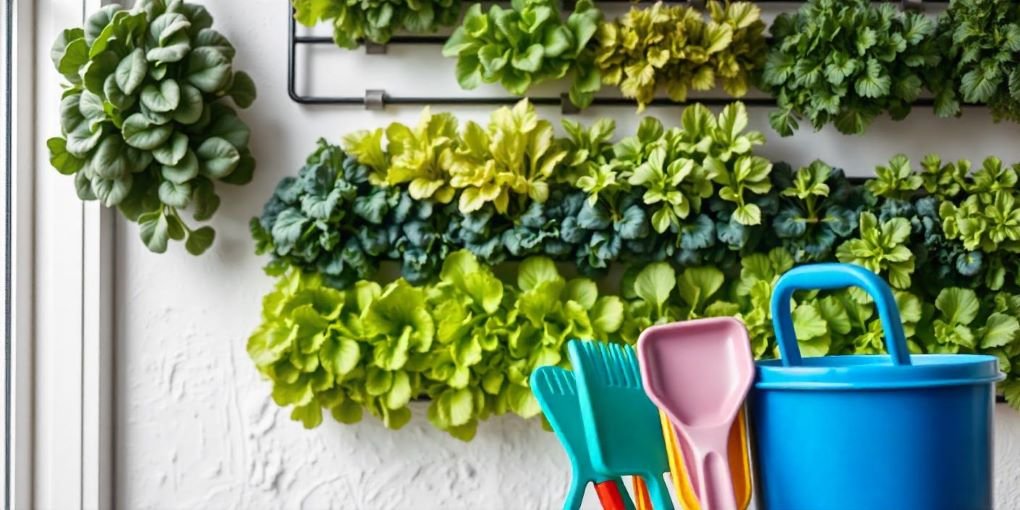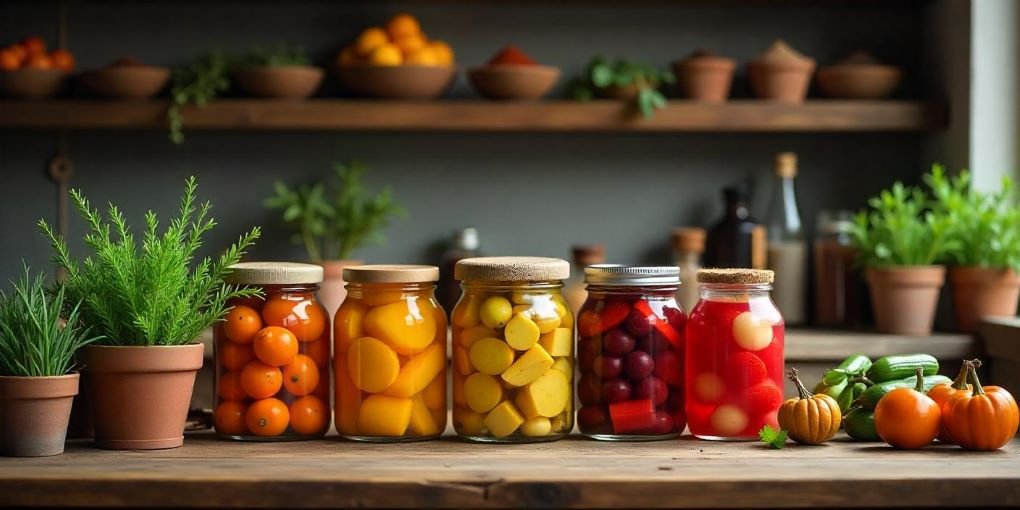In a world where fresh produce is often just a grocery store visit away many are discovering the immense joy and satisfaction that comes from growing their food. Cultivating a home garden provides access to fresh nutritious ingredients and fosters a deeper connection with natureThis extensive guide will explore the best plants to grow at home for food highlighting their unique benefits optimal growing conditions, and tips for successful harvesting. Whether you have a sprawling backyard a modest balcony, or even just a windowsill there is a plant suitable for every space and every palate.
The Benefits of Growing Your Food
Before delving into specific plants it is essential to understand the myriad benefits of growing food at home.
Freshness and Flavor
Nothing beats the taste of freshly harvested produce. When you grow your food you control when to harvest ensuring peak flavor and freshness. Homegrown fruits vegetables and herbs often taste better than their store-bought counterparts which may have been harvested before they are fully ripe.
Nutritional Value
Homegrown produce is often more nutritious. Commercial farming practices may involve storage and transportation that can deplete the nutritional value of fruits and vegetables. You will likely enjoy higher vitamin and mineral content by consuming food you have grown.
Cost Savings
Starting a home garden can lead to significant savings on your grocery bill. While some initial investment in seeds soil and gardening tools may exist the long-term benefits can outweigh the costs. Many plants can yield multiple harvests maximizing your return on investment.
Environmental Impact
Growing your food reduces your carbon footprint. You are minimizing transportation emissions by not relying on commercial produce. Furthermore cultivating your garden can improve local biodiversity and promote healthier ecosystems.
Mental and Physical Health Benefits
Gardening is an excellent form of exercise and can be a great stress reliever. Engaging with nature has been shown to improve mental health and overall well-being. Tending to plants can offer a feeling of purpose and fulfillment.
Choosing the Right Plants for Your Space

When selecting plants to grow at home, consider your available space climate, and personal preferences. Here is a detailed overview of the best plants to grow for food, categorized by type: herbs leafy greens vegetables and fruits.
Herbs: Flavor Enhancers for Every Dish
Herbs are a vital component of every home garden. Not only do they add flavor to your meals, but many also possess medicinal properties. They can thrive in small spaces, making them perfect for containers or windowsill gardening.
Basil: The King of Herbs
Basil is a fragrant herb beloved in various cuisines, especially in Italian cooking. This versatile herb can elevate dishes like pasta, salads, and pizzas.
- Growing Conditions: Basil prefers warm temperatures (70-90°F) and well-drained soil rich in organic matter. It thrives in full sunlight, so place it in a south-facing spot if possible.
- Planting Tips: Begin or sow seeds indoors once the last frost has passed. Position the plants 12 inches apart to ensure adequate airflow.
- Watering Needs: Maintain a consistently moist soil without letting it become waterlogged—water directly at the base of the plant to avoid leaf mildew.
- Harvesting: Start collecting leaves once the plant is at least 6 inches tall. Consistently trim the upper leaves to promote fuller growth.
Cilantro: A Versatile Favorite
Cilantro, or coriander, is utilized in various international dishes, ranging from salsas to soups.
- Growing Conditions: Preferring cooler weather, cilantro grows best in temperatures between 50-85°F. It thrives in well-draining soil and bright sunlight.
- Planting Tips: Place seeds directly in the garden or containers. Plant seeds at intervals of a few weeks to guarantee a consistent yield.
- Watering Needs: Cilantro likes evenly moist soil but can tolerate brief dry spells.
- Harvesting: Cut the outer leaves as needed and allow the inner leaves to continue growing. For seeds, let the plant flower, then harvest when the seeds turn brown.
Parsley: The Nutrient-Rich Green
Parsley is a herb rich in nutrients that can improve the taste of various dishes.
- Growing Conditions: It prefers rich, moist soil and can grow in partial shade, making it a versatile addition to your garden.
- Planting Tips: Soak seeds overnight before planting to enhance germination. Space plants 6-8 inches apart.
- Watering Needs: Water regularly to maintain moisture, especially in hot weather.
- Harvesting: Snip leaves as needed. Harvesting outer leaves first encourages new growth.
Leafy Greens: Nutrient Powerhouses
Leafy greens are among the easiest and most nutritious plants to grow at home. They need very little room and can be cultivated in pots or elevated gardens.
Spinach: The Superfood Green
Spinach is rich in iron and includes vitamins. A, C, and K, making it an excellent choice for salads, smoothies, and various cooking dishes.
- Growing Conditions: Spinach prefers cooler temperatures (45-75°F) and well-drained, fertile soil.
- Planting Tips: Sow seeds directly in the garden or pots. Space seeds 1-2 inches apart and thin them to 4-6 inches once they sprout.
Watering Needs: Maintain the soil’s moisture consistently without making it overly wet.
- For harvesting: Start collecting leaves once they have grown sufficiently, typically about 6-8 weeks post-planting. Select the outer leaves first to enable the inner leaves to keep growing.
Kale: The Hardy Green
Kale is a nutrient-dense leafy green known for its versatility and health benefits.
- Growing Conditions: Kale is very hardy and can withstand frost, making it suitable for early spring and late fall planting. It thrives in rich, well-drained soil.
- Planting Tips: Sow seeds directly in the garden or start indoors. Space plants 12-18 inches apart.
- Watering Needs: Water regularly, especially during dry spells, to keep the soil moist.
- Harvesting: Harvest outer leaves as needed. Tender leaves can be consumed raw in salads, whereas mature leaves are excellent for cooking.
Lettuce: A Salad Staple
Lettuce is a fast-growing leafy green perfect for salads, sandwiches, and wraps.
- Growing Conditions: Preferring cooler weather, lettuce grows best in well-drained soil with ample sunlight or partial shade.
- Planting Tips: Plant seeds straight into the garden or in containers. Place seeds roughly 1 inch apart and thin out the seedlings to a distance of 6-12 inches.
- Watering Needs: Keep the soil consistently moist to prevent bitterness.
- Harvesting: Harvest leaves from the outside of the plant. Consider cutting just above the crown for a continuous supply to allow new leaves to sprout.
Vegetables: Homegrown Goodness

Growing vegetables at home is advantageous. Not only do you enjoy fresh produce, but many vegetables also provide high yields.
Tomatoes: The Garden Favorite
Tomatoes are among the most popular homegrown vegetables, celebrated for their versatility in the kitchen.
- Growing Conditions: Tomatoes thrive in warm weather and need well-drained, nutrient-rich soil. They require full sunlight for optimal growth.
- Planting Tips: Start seeds indoors 6-8 weeks before the last frost, then transplant them outside. Space plants 18-24 inches apart.
- Watering Needs: Water deeply but infrequently, Permitting the soil to dry out in between waterings helps to avoid root rot.
- Harvesting: Pick tomatoes when fully colored and slightly soft to the touch. Regularly check for ripeness.
Bell Peppers: Colorful and Crunchy
Bell peppers bring vibrant color and a crunchy texture to every meal.
- Growing Conditions: Preferring warm weather, bell peppers thrive in full sun and well-drained soil.
- Planting Tips: Start seeds indoors and transplant Once the final frost has passed, plant them with a distance of 12-18 inches in between.
- Watering Needs:Maintain a steady level of moisture in the soil, particularly in warm weather.
- Harvesting: Harvest peppers once they attain the preferred color and size. For maximum flavor, allow them to ripen on the plant.
Carrots: Crunchy and Sweet
Carrots are a crunchy, sweet root vegetable that can be eaten raw or cooked.
- Growing Conditions: Carrots prefer loose, sandy soil for proper root development. They thrive in cooler weather.
- Planting Tips: Plant seeds directly in the soil, keeping a distance of approximately 2 inches between them. As the seedlings develop, thin them out to avoid overcrowding.
- Watering Needs: Maintain moisture in the soil while steering clear of excessive watering, as it can lead to rot.
- Harvesting: Harvest when they reach the desired size, usually 2-3 months after planting. Gently loosen the soil around the base to pull them up.
Fruits: Sweet Rewards from Your Garden
Cultivating fruits in your own garden is a fulfilling pursuit that offers tasty and healthy treats.. Many fruit plants can be grown in containers or small spaces.
Strawberries: A Garden Delight
Strawberries rank among the most favored fruits for home cultivation because of their delightful taste and adaptability.
- Growing Conditions: Strawberries prefer well-drained soil rich in organic matter. They thrive in full sun.
- Planting Tips: Plant bare-root strawberries in early spring. Space plants are about 12-18 inches apart.
- Watering Needs: Water regularly, especially during dry spells, to keep the soil moist.
- Harvesting: Harvest strawberries when they are bright red and fully ripe. Use scissors to cut the stem just above the berry.
Blueberries: Antioxidant Powerhouses
Blueberries are packed with antioxidants and are perfect for smoothies, desserts, or eating fresh.
- Growing Conditions: Blueberries require acidic soil (pH 4.5-5.5) and full sun. They can be grown in pots if your soil needs to be more suitable.
- Planting Tips: Plant multiple varieties for better pollination. Space plants 4-5 feet apart.
- Watering Needs: Maintain a steady level of moisture in the soil, particularly while the fruits are developing.
- Harvesting: Pick berries when they are entirely blue and sweet. They can be stored in the refrigerator for a few days.
Raspberries: A Tangy Treat
Raspberries are delicious and can be used in various recipes, from jams to desserts.
- Growing Conditions: Raspberries thrive in well-drained soil with full sun. They prefer slightly acidic soil.
- Planting Tips: Plant bare-root canes in early spring, spacing them about 2-3 feet apart.
- Watering Needs: Maintain the soil’s moisture consistently, ensuring it is not waterlogged.
- Harvesting: Ripe raspberries easily fall off the plant when gently tugged. Harvest regularly to encourage new growth.
To ensure a bountiful harvest from your home garden, consider the following comprehensive tips:
Growing Tips for Success

To ensure a bountiful harvest from your home garden consider the following tips:
Soil Quality
Enhance your soil by incorporating organic materials like compost to boost its fertility and texture. Conduct an analysis of the soil to evaluate pH levels and nutrient content. Adjust the soil as needed to establish the best conditions for growth
.Watering Practices
Consistent watering is crucial for plant health. Early morning is the best time to water, as it minimizes evaporation and reduces the risk of fungal diseases. Install drip irrigation systems or use soaker hoses to ensure adequate water supply.
Companion Planting
Certain plants benefit from being grown together, a practice known as companion planting. For instance, growing basil alongside tomatoes can improve their taste and repel pests. Similarly, marigolds can help repel harmful insects when planted alongside vegetables.
Pest Management
Keep an eye on your plants to check for any pests or diseases that might be affecting them and use cause natural solutions like neem oil or special soaps made for plants to help keep them healthy without using harsh chemicals. It’s also a good idea to attract helpful insects, such as ladybugs and lacewings
Fertilization
Nourish your plants with organic fertilizers or compost to encourage robust growth. Adhere to the guidelines for individual plants concerning the kind and frequency of fertilization. Excessive fertilization may cause nutrient imbalances and negatively affect your plants.
Seasonal Considerations
Understand your local climate and growing seasons. Certain plants flourish in cooler temperatures, whereas others favor the warmth of summer. Research the best planting times for your region to maximize your harvest. Consider using row covers or greenhouses to extend the growing season for sensitive plants.
Conclusion
In conclusion, growing your food at home is a rewarding and fulfilling experience. By choosing suitable plants and adhering to effective gardening methods, you can establish an eco-friendly supply of fresh produce in your garden. Regardless of whether you opt for herbs, leafy greens, vegetables, or fruits, the joy of harvesting your own food is unparalleled.
Home gardening benefits your physical health through increased access to fresh produce and contributes positively to your mental well-being. It encourages mindfulness, reduces stress, and fosters environmental connection.
Frequently Asked Questions Best Plants to Grow at Home for Food
What are the easiest plants for beginners to grow at home?
Some of the simplest plants for beginners are herbs such as basil, cilantro, and parsley, along with leafy greens like spinach and lettuce. Radishes and zucchini are also relatively simple to grow and yield quick results.
How much sunlight do plants need to grow?
The majority of fruit and vegetable plants need full sun exposure, which entails receiving at least 6-8 hours of direct sunlight are required each day.However, some leafy greens and herbs can tolerate partial shade, making them suitable for areas with less sunlight.
How often should I water my plants?
The watering frequency depends on the plant type, climate, and soil conditions. Typically, examine the upper inch of soil. if it’s dry, it’s time to water. Most plants prefer consistent moisture, so aim to water deeply once or twice a week rather than lightly every day.
Can I grow vegetables in containers?
Many vegetables thrive in containers, making them perfect for compact areas such as balconies or patios. Choose containers at least 12 inches deep for root vegetables and ensure they have drainage holes. Plants like tomatoes, peppers, and herbs are excellent choices for container gardening.
What is companion planting, and why is it important?
Companion planting involves growing different plants that can benefit each other. This method can improve pest control, enhance growth, and maximize space. For example, planting marigolds with vegetables can deter pests, while basil can improve the flavor of tomatoes.
How can I prevent pests in my home garden?
To prevent pests, use natural repellents like neem oil or insecticidal soap. Encourage helpful insects like ladybugs and lacewings that feed on damaging pests. Maintaining healthy plants through proper watering and fertilization can also make them less susceptible to pests.
What soil type is best for growing vegetables?
Well-drained, loamy soil enriched with organic matter, such as compost, is ideal for growing vegetables. It provides necessary nutrients, retains moisture, and promotes healthy root development. Testing your soil for pH and nutrient levels can help you make necessary amendments.
How do I know when to harvest my vegetables and fruits?
Each type of plant has its harvesting guidelines. In general, fruits and vegetables are prepared to be picked once they attain their full size and appropriate color. For example, tomatoes should be picked when entirely red and slightly soft. At the same time, carrots can be harvested when they reach the desired size. Always consult specific guidelines for each plant for the best results.
Is it possible to grow food indoors?
Yes, many fruits, vegetables, and herbs can be successfully grown indoors. Select plants that do well in dim lighting, including herbs such as basil and chives. Consider using grow lights if natural sunlight is limited, and ensure proper ventilation.
Can I use chemical fertilizers in my home garden?
While chemical fertilizers can be effective, it’s best to use organic fertilizers when growing food at home. Organic options like compost, fish emulsion, or well-rotted manure improve soil health and promote sustainable gardening.
What are some common mistakes to avoid when starting a home garden?
Common mistakes include overwatering or underwatering, not preparing the soil adequately, overcrowding plants, and neglecting pest control. Additionally, failing to research the specific needs of your growing plants can lead to poor results. Take the time to plan and monitor your garden to ensure success.
How can I extend my growing season?
To extend your growing season, consider using row covers, cold frames, or greenhouses to protect plants from frost. Starting seeds indoors and transplanting them outdoors after the last frost can also help. Selecting frost-resistant varieties and practicing succession planting can maximize your harvest.
What should I do if my plants are not growing well?
If your plants are struggling, assess their growing conditions.
Check for proper sunlight, watering practices, soil quality, and pest issues. Adjust as needed, and consider conducting a soil test to identify nutrient deficiencies. Sometimes, relocating the plants or giving them more care can make a significant difference.
Can I save seeds from my homegrown plants?
Saving seeds from your homegrown plants is a great way to maintain your garden. Allow fruits to ripen and dry out before harvesting seeds thoroughly. Keep seeds in a cool, dry location, and make sure to label them clearly to monitor the different varieties.
How do I deal with weeds in my garden?
Weeds can be managed through regular maintenance. Hand-pulling weeds, using mulch to suppress growth, and planting cover crops can help keep weeds at bay. Additionally, consider using landscape fabric or biodegradable mulch to reduce weed competition in your garden beds.
